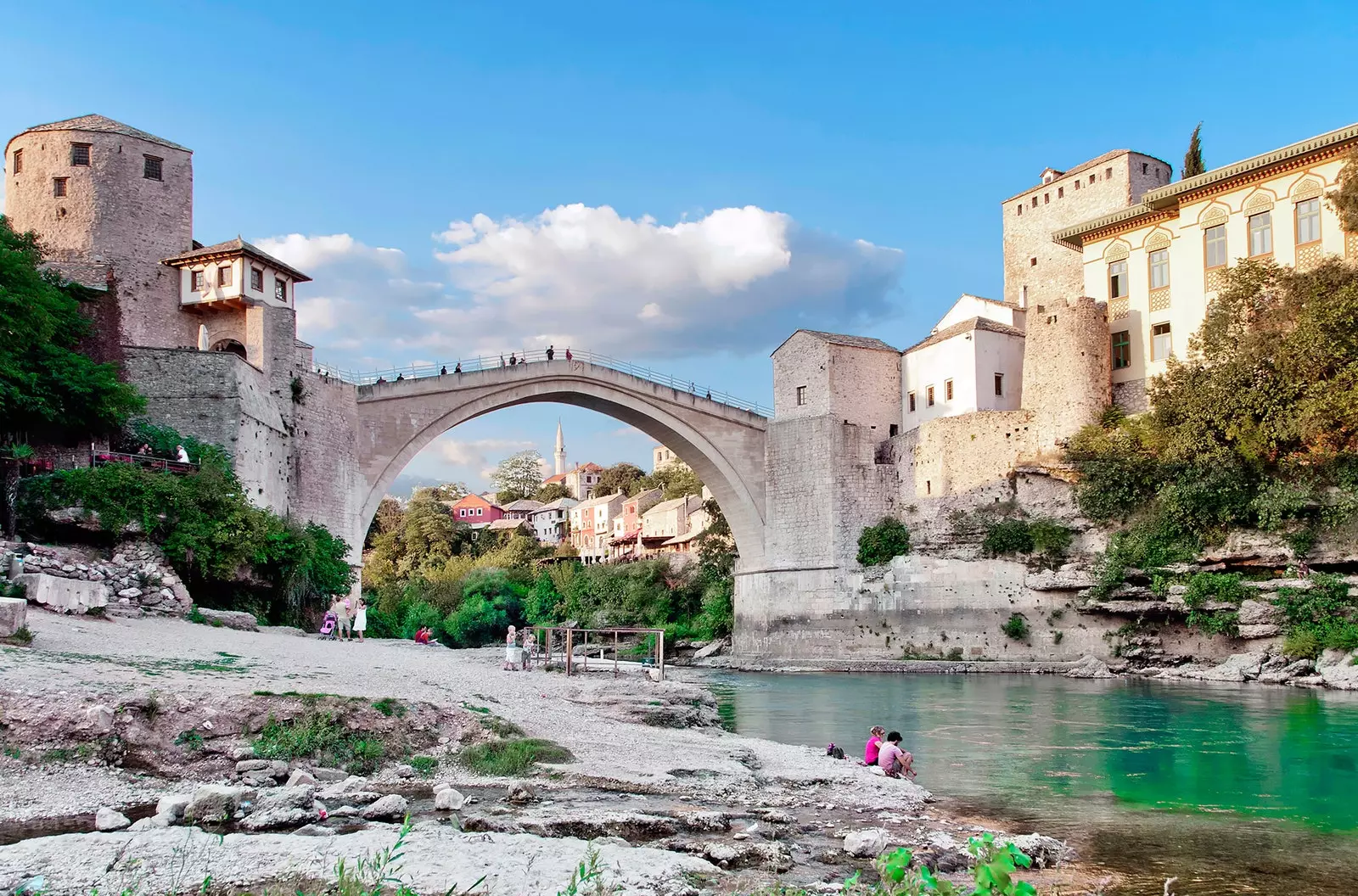
Stari Most
The historical region of Herzegovinian is in southwestern Bosnia, flanked by neighboring Croatia and bordering Montenegro to the south. This territory, which has Mostar to its most famous destination, offers a very different landscape from the rest of the Balkan country. Here the Mediterranean and dry climate has shaped over the centuries a dry and rocky land. A difficult environment that also marks the character of its inhabitants: proud and hardworking people.
This rough appearance hides, however, a region rich in history, with villages of oriental architecture and a tranquility Hard to find in nearby Croatia. Most tourists who visit the Balkans forget about this area. And that we are to a few kilometers from Dubrovnik, great tourist center of the crowded Dalmatian Coast.
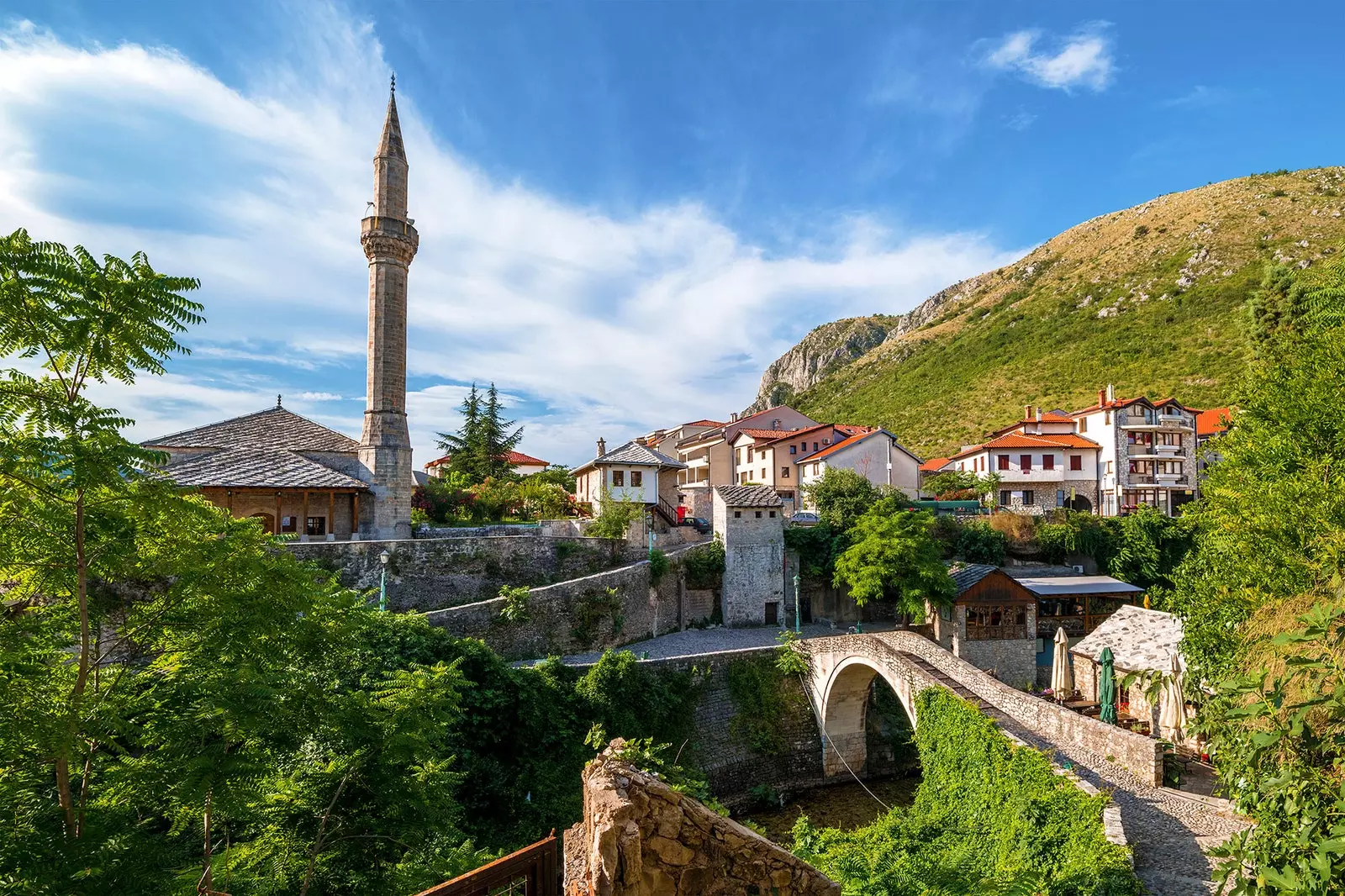
Mostar and its maze of streets
in Herzegovinian the three communities share territory (Catholic Croats, Orthodox Serbs and Muslims) who clashed during the war that followed the dissolution of the former Yugoslavia. Y the division between them, despite not being obvious at first glance, is still a reality.
Still, as in other parts of Bosnia, the majority of the population is slowly trying to heal the wounds of the conflict. In a reconstruction work that has in **the old bridge of Mostar (Stari Most)** a good metaphor. After its destruction during the war, in 2004 an identical copy of the old single-arch structure was built. Thus, a new stage was opened for this region and its inhabitants.
THE JUMPERS OF THE STARI MOST
Around the old bridge flourished in the century XVI this city crossed by the Neretva river. So much so that its name comes from the term by which the guardians who guarded it (mostari) were known at the time of Ottoman rule.
Today this construction is a mandatory stop for tourists, that gather around him while they wait for him to one of the local jumpers launches, not without first receiving a tip, into the water.
For centuries the Stari Most was the symbol that connected the western and eastern part of Mostar. and today is the benchmark to be located in its historic center, Muslim majority and a small labyrinth of cobbled streets full of craft shops, restaurants and cafes.
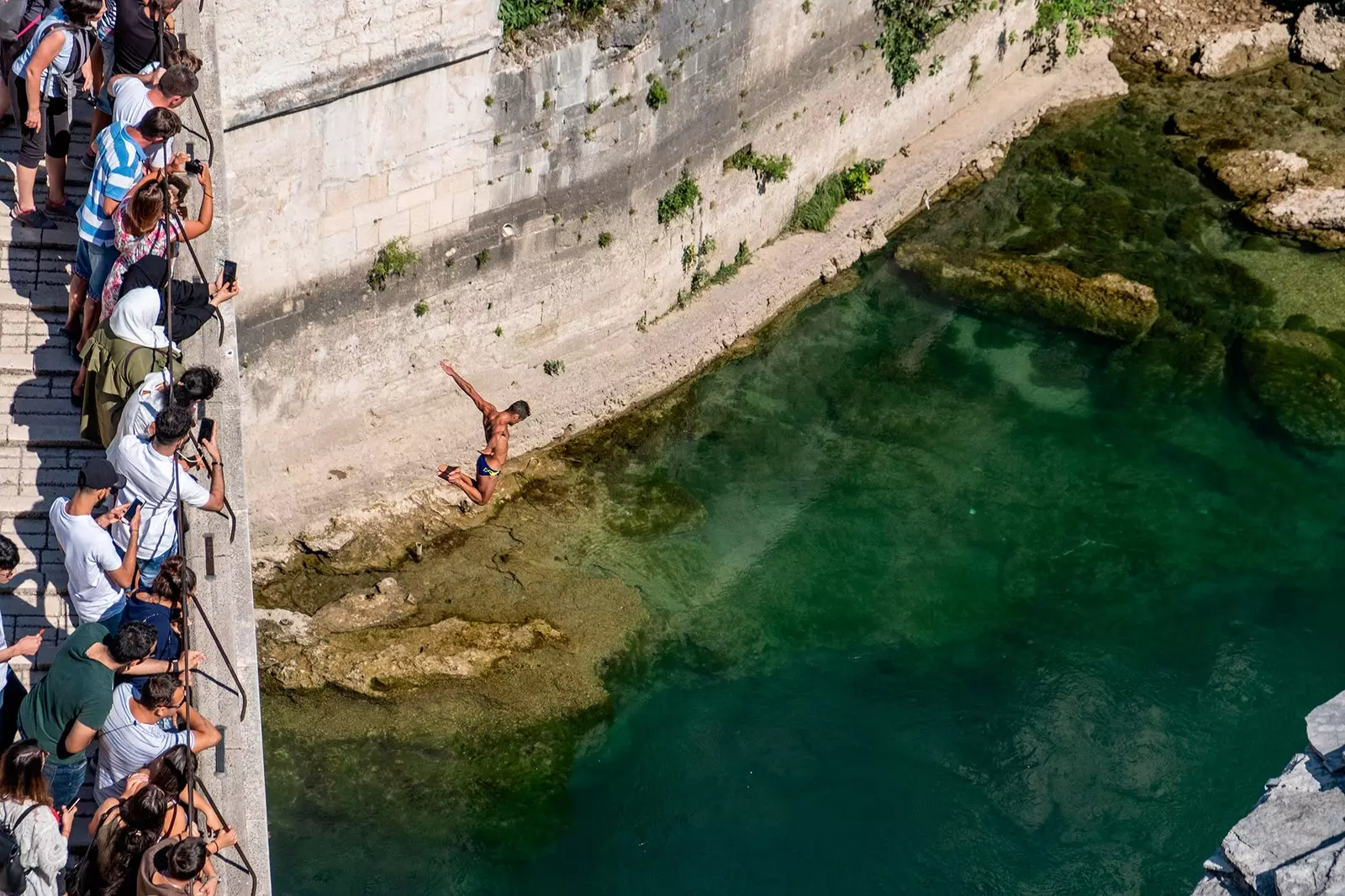
One of the jumpers jumps into the water of the Neretva River
Here are also the main mosques of the city. Among them are the Karadoz-Bey and of Koski Mehmed Pasha. The latter overlooking the rocky shore of the Neretva and with beautiful views of the most famous bridge in the Balkans.
This temple is reached after crossing the busy Kujundžiluk Alley, where can they be found bronze sculptures, Turkish rugs and a wide variety of antiques (including old war memorabilia) .
To get an idea of what life was like here in the times of the Ottoman Empire, it is also recommended visit the old Bišćević houses (XVII century) and Muslibegović (century XVIII) .
THE SOURCE OF THE BUNA RIVER
Although many of the tourists arriving in Mostar do so on day trips from Croatia, in recent years They have opened a large number of hostels and accommodation of various prices. This allows them to dedicate the time they deserve to the city and its surroundings.
Just 15 minutes by car from Mostar is Blagaj, birthplace of the river Buna. This natural corner captivated the conquerors who came from the East, who ordered the construction of a tekija (house-monastery) for the spiritual retreat of the dervishes, members of the Sufi community.
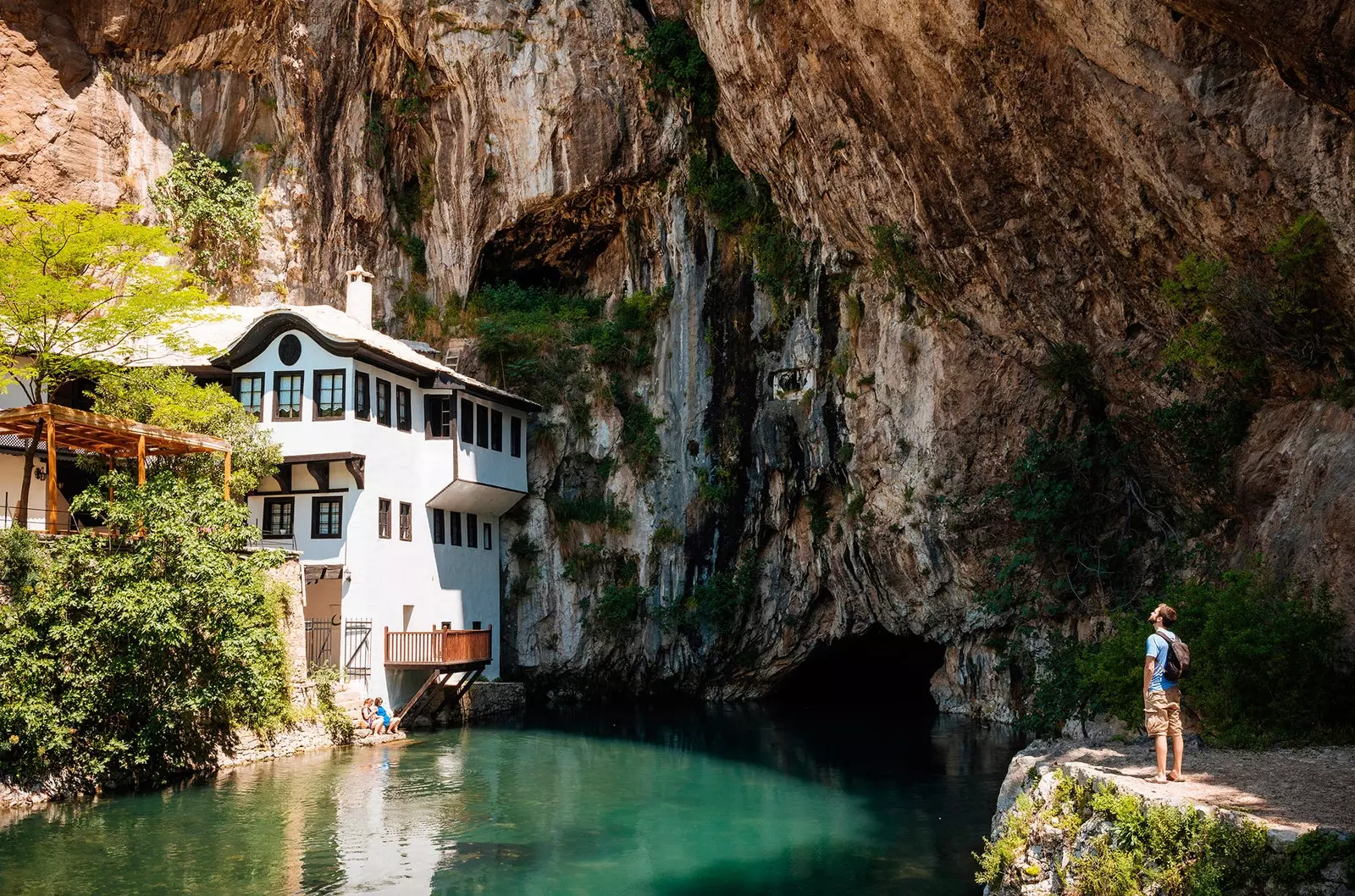
Blagaj, birthplace of the river Buna
The 16th century building It is at the foot of a 200-meter rocky wall, which rises above the grotto from which the turquoise water of the Buna flows. Locals say that the depth of the cave it is such that the authorities prohibited the entry of divers years ago to explore it.
A quieter plan is to sit in one of the riverside restaurants to eat one of their typical trout.
POCITELJ AND KRAVICA WATERFALLS
Driving towards the Croatian border we find another unavoidable stop on this route through Herzegovina: the small village of Počitelj. Perched on a hill attached to the Neretva on its way to the Adiatric Sea, This town was for centuries a strategic enclave for military control region of.
Today they are still in very good condition –some buildings were partially rebuilt after the war- houses and temples of oriental style, erected during the first stage of Ottoman rule. It's worth going up Sahat Kula Fort, at the top of the mountain that dominates the town and tour the remains of the old fortress and its walls.
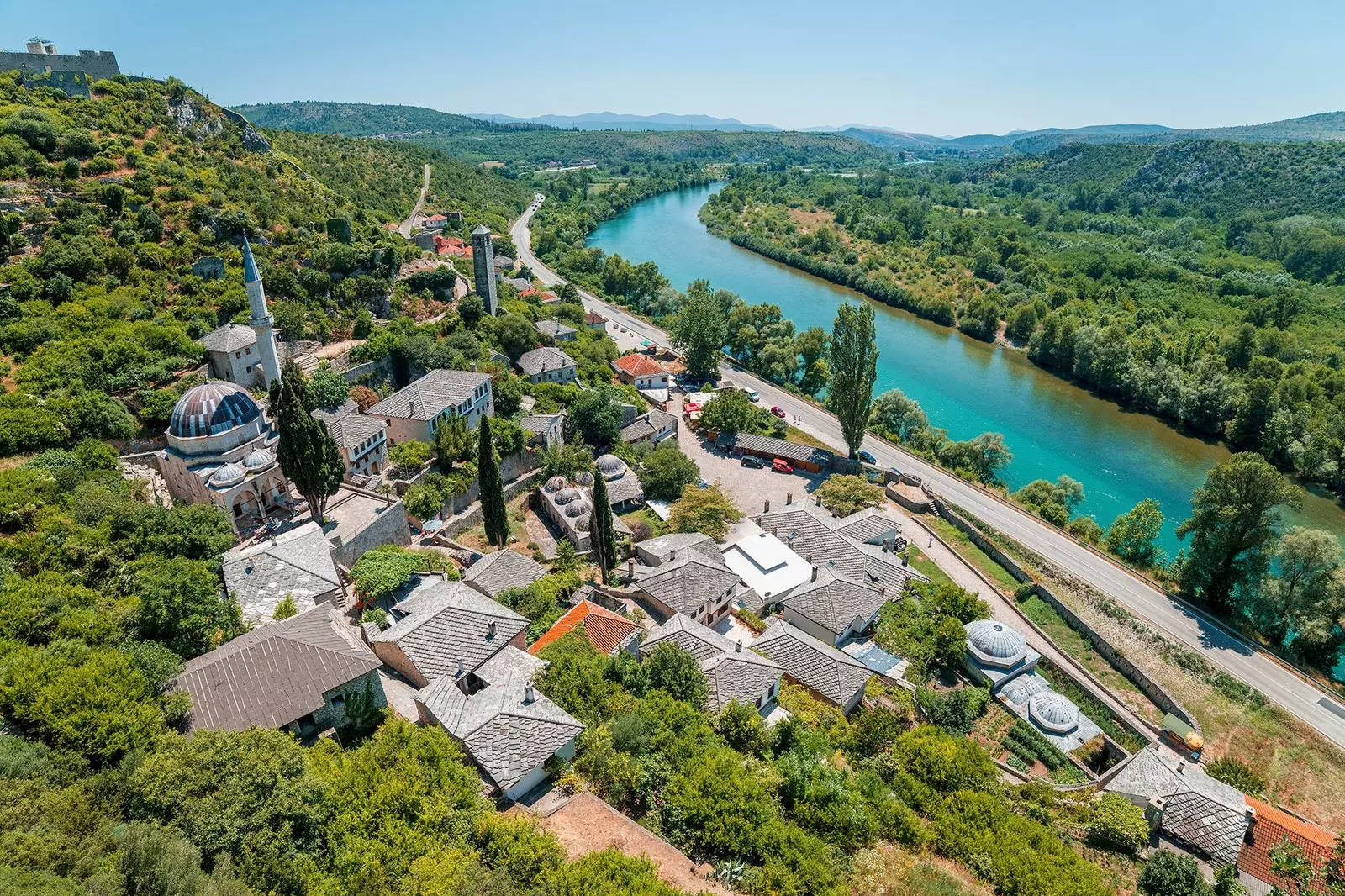
The small village of Pocitelj
Taking the detour to Ljubuŝki you will easily reach Kravica Falls. next to the nearby town of Medjugorje -point of Catholic pilgrimage and destination of hundreds of thousands of faithful each year-, this beautiful enclave has become in recent years one of the most visited places in the country. Especially during the hot Bosnian summer.
At the foot of the waterfalls that form the river Trebizat it forms a huge natural pond ideal for taking a bath or having a beer in the shade. You can also camp in some designated areas.
DRIVING TO TREBINJE
Among the tourists who come to Mostar and its surroundings, few dare to continue driving south, in the direction of Trebinje, very close to the triple border between Bosnia, Croatia and Montenegro.
While following the course of the Trebiŝnjica river the landscape is becoming drier and the lifestyle of its inhabitants more traditional. In the ditches of the road there are many signs offering artisan med (honey) and other products of the land.
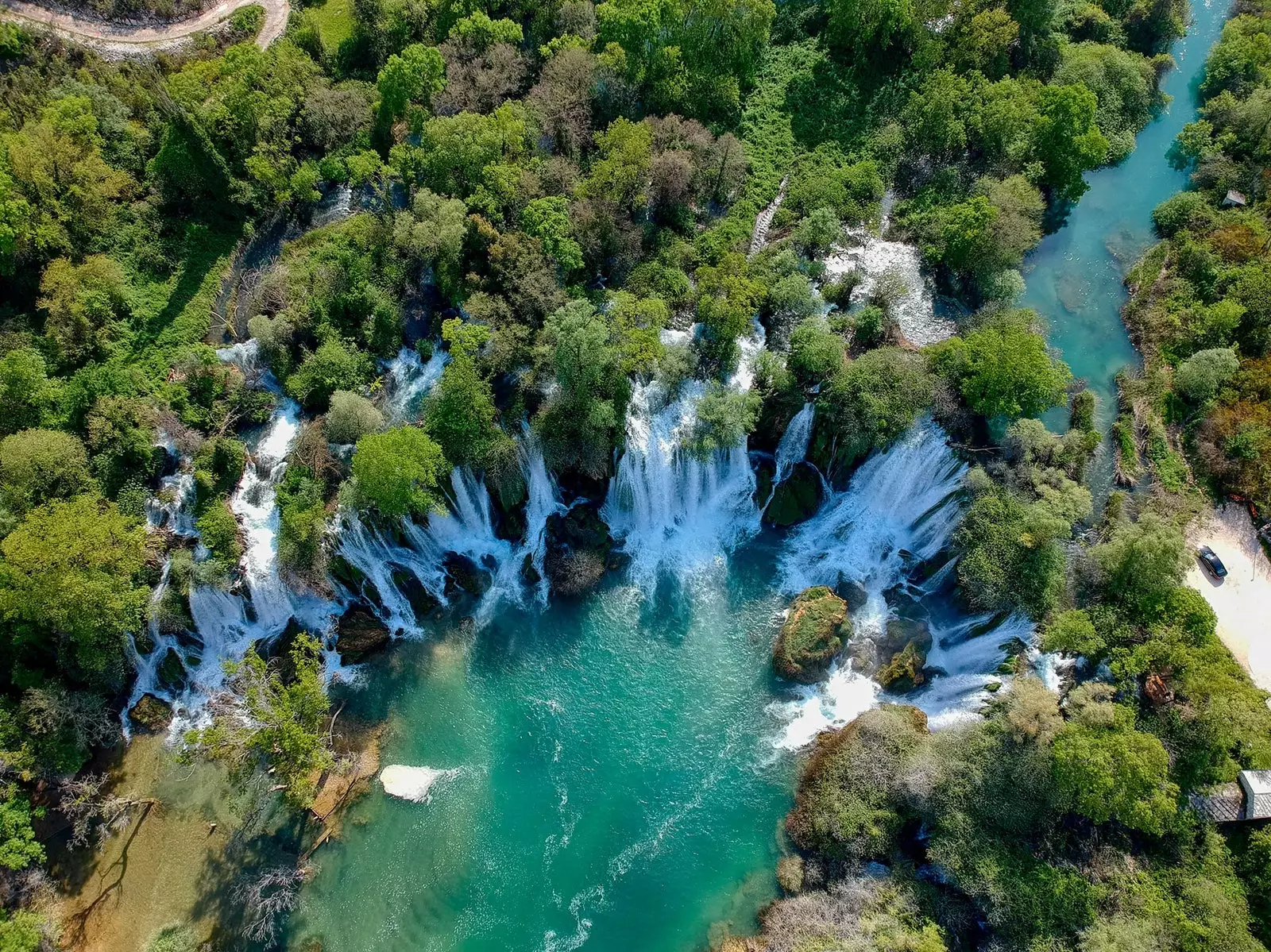
Kravica Falls
Between these wine stands out, one of the few things that have remained unchanged in Herzegovina over the centuries. Grapes have been grown in the valleys of this region since Roman times and wine is still the main sustenance for many of its inhabitants. This is the case, for example, in Popovo Polje Valley, a karstic plain that widens as we head south.
Very close to there are the impressive Vjetrenica caves and the small orthodox monastery of Zavala , built on a stone wall in the 16th century.
A good end point of the trip is Trebinje. Perhaps because of its location away from almost everything, the beautiful old town of this city suffered little damage during the war . Thus, the Ottoman bridges that connect its streets and several buildings of medieval origin remained standing.
The Mediterranean aroma permeates everything in this town. Also the fresh products that are sold every weekend in the main square. An ideal time to smell and taste the most authentic Bosnia.
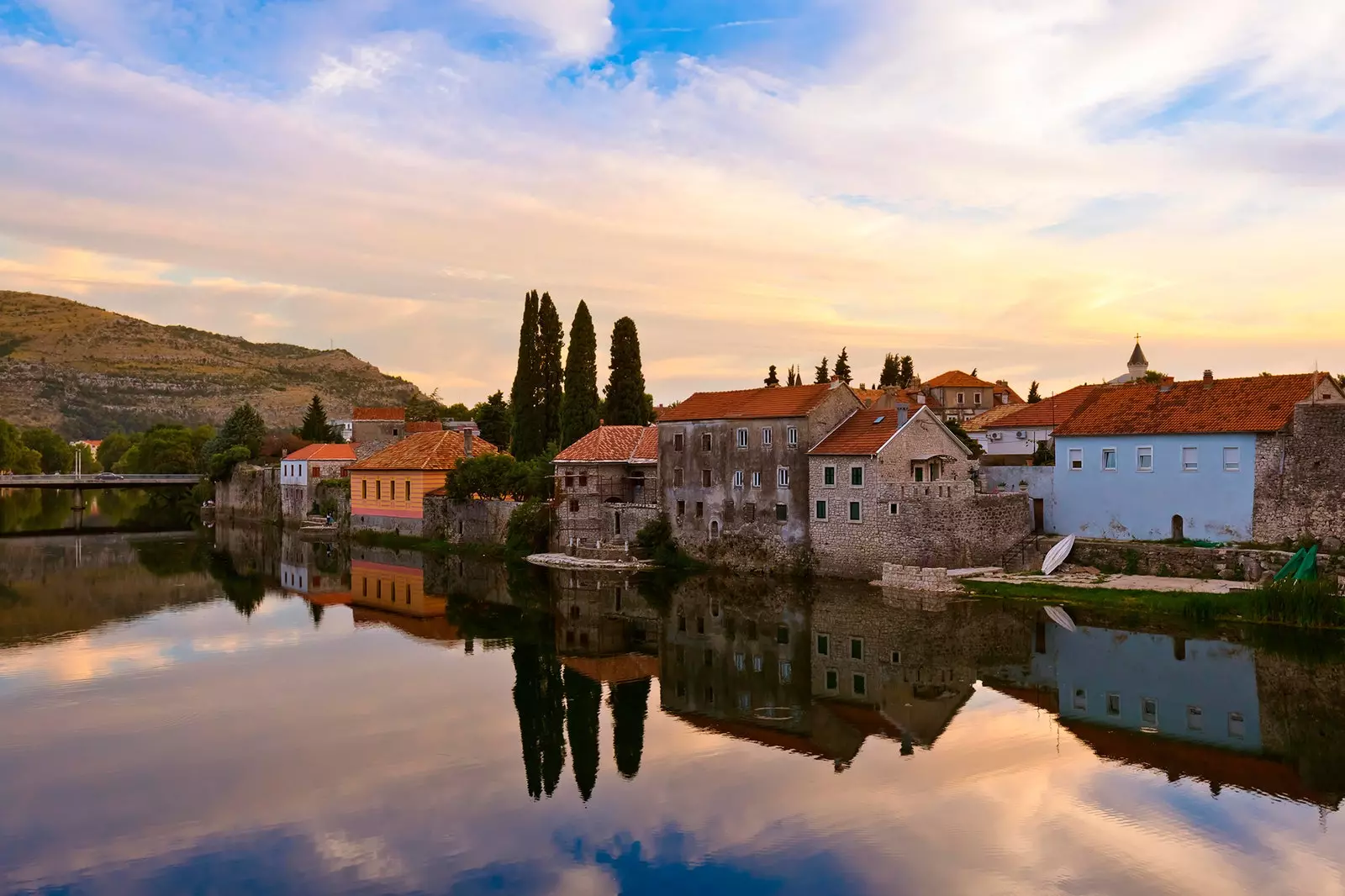
Trebinje
